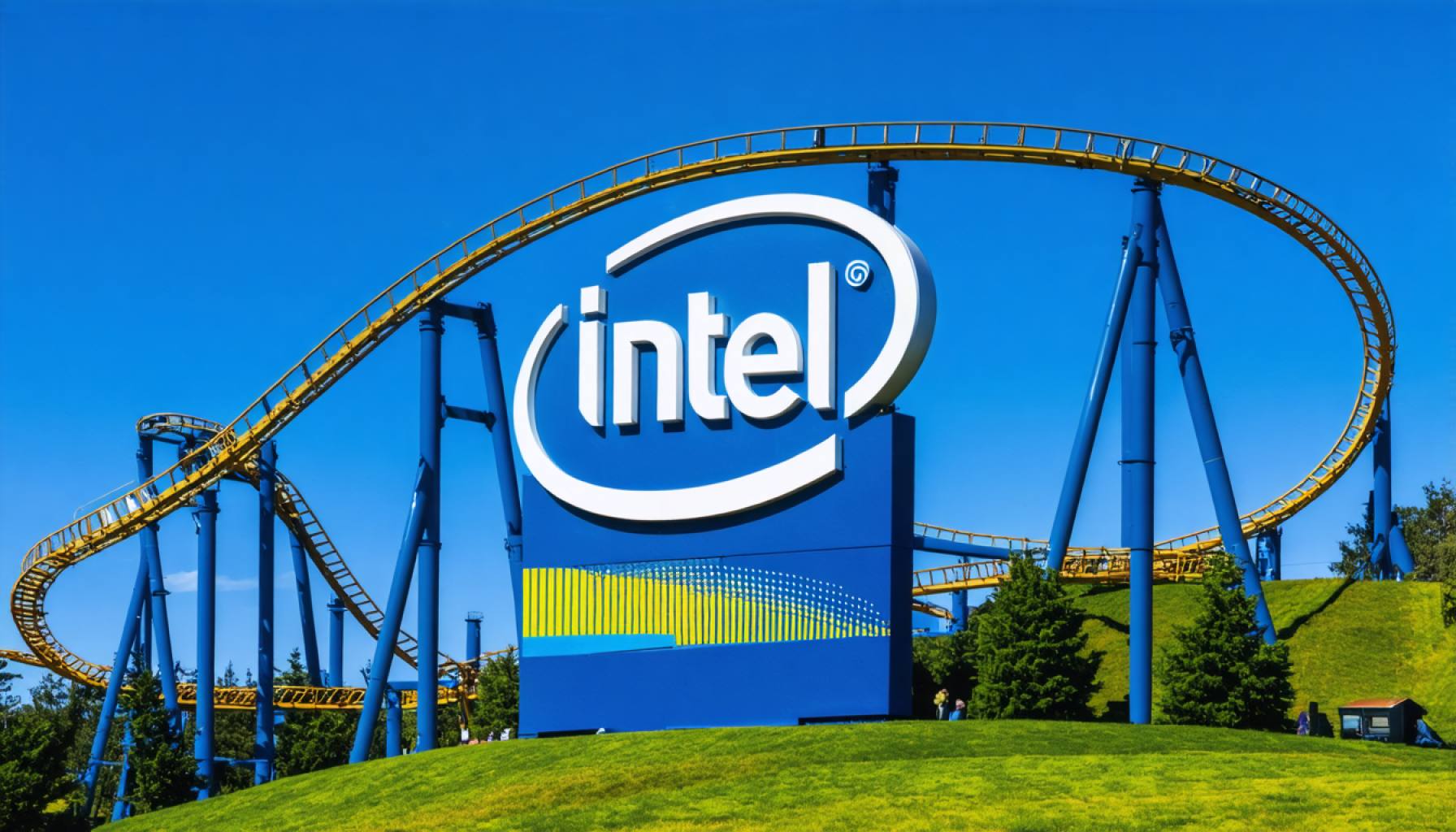- Intel’s stock plummeted by 10.8% despite announcing a promising partnership with Taiwan Semiconductor Manufacturing Company (TSMC).
- Intel aims to leverage TSMC’s advanced technology to enhance its foundry business, with TSMC securing a 20% stake in the new venture.
- Geopolitical tensions, notably China’s 34% retaliatory tariff on U.S. exports, threaten Intel’s pricing strategies and market positioning.
- The situation highlights the importance of balancing innovation with the complexities of international trade relations.
- Investors should approach Intel’s potential resurgence with caution due to ongoing trade uncertainties.
Thursday proved to be a turbulent day for Intel, as anticipation and anxiety collided on the trading floor. Even the promise of a transformative partnership couldn’t shield the chip giant from a sharp 10.8% dive in stock value. The scene felt almost cinematic: a fleeting moment of optimism dashed by the rough seas of global trade.
At the heart of this tempest is Intel’s move to join forces with Taiwan Semiconductor Manufacturing Company (TSMC), the unrivaled titan of chip production. This proposed arrangement hints at a future where Intel’s foundry business could bask in TSMC’s cutting-edge technological prowess. Strategically, TSMC would assume a substantial 20% stake in a new enterprise, poised to rejuvenate Intel’s manufacturing capabilities. In this visionary partnership, Intel finds an opportunity to recalibrate its often-criticized management practices and breathe new life into its operations.
Yet, Intel’s potential resurgence is clouded by geopolitical strife. The trade landscape darkened with China’s retaliatory tariffs in response to recent U.S. levies. A daunting 34% tariff looms over U.S. exports, undercutting Intel’s pricing strategy within one of its critical markets and giving rise to formidable competition from Chinese chipmakers.
As traders grapple with these developments, the love-hate relationship between market optimism and geopolitical tension is on full display. The bold venture with TSMC is undoubtedly a beacon of hope, hinting at a future where Intel could leapfrog existing limitations. But the shadow of a trade war threatens to obfuscate this vision, reminding investors of the precarious balance between innovation and international relations.
The essential takeaway for observers and investors alike is the importance of agility and foresight. While strategic partnerships can pave the way for miraculous turnarounds, navigating the turbulent waters of international politics is equally crucial. Until the current trade uncertainties resolve, this volatile mix suggests a cautious approach to betting on Intel’s comeback journey.
Intel’s Bold New Moves: The Opportunities and Obstacles Ahead
The Strategic Shake-Up: Intel and TSMC’s Unprecedented Alliance
In a bid for revitalization, Intel’s recent announcement to align with Taiwan Semiconductor Manufacturing Company (TSMC) marks a pivotal moment for the chip giant. This partnership allows Intel to leverage TSMC’s state-of-the-art manufacturing capabilities, astutely positioning them toward reclaiming their competitive edge in the semiconductor industry. By entering into a joint venture where TSMC takes a substantial 20% stake, Intel aims to enhance its production quality and efficiency significantly.
The Broader Implications of Intel’s Partnership
Market Forecasts & Industry Trends
The Intel-TSMC partnership has the potential to impact the semiconductor market significantly. The alliance is likely to set a precedent for increased collaboration between major industry players, emphasizing efficiency over competition. Analysts predict that such collaborations could become more common as supply chain complexities and production costs grow (source: Forbes).
Real-World Use Cases
The fruits of the Intel-TSMC partnership could lead to advancements in AI technology, the Automotive sector, and consumer electronics by ensuring the availability of high-performance chips necessary for these innovations.
Understanding the Geopolitical Quandary
Despite the bright prospects, Intel faces substantial challenges due to escalating trade tensions, particularly the recently imposed 34% tariffs by China. These tariffs pose a significant threat to Intel’s pricing strategies and can make their products less competitive against local Chinese chipmakers. This geopolitical strife demands an aggressive yet tactical response from Intel to maintain and grow its market share in China.
Pros & Cons Overview
Pros:
– Access to Advanced Technology: Intel benefits from TSMC’s cutting-edge fabrication processes.
– Increased Market Competitiveness: The partnership could allow Intel to re-enter high-performance computing markets with competitive products.
Cons:
– Geopolitical Risks: Ongoing trade tensions pose significant uncertainties.
– Financial Strains: Initial investments and potential restructuring costs could strain Intel’s financial resources.
Insights & Predictions
Experts speculate that the collaboration could herald a new epoch of U.S.-Asian corporate partnerships aiming for technological supremacy. However, the volatility induced by geopolitical factors remains a significant challenge to forecast accurately (source: Bloomberg).
Actionable Recommendations
– Diversification Strategies: Investors might consider diversifying their portfolios to hedge against geopolitical uncertainties impacting the technology sector.
– Monitoring Industry News: Staying informed on the developments in U.S.-China trade relations is crucial for stakeholders to anticipate market shifts.
Quick Tips for Investors
1. Adopt a Cautious Investment Approach: Consider gradual investments to manage risks associated with trade tensions.
2. Explore ETFs: Look at technology-focused ETFs that include a diversified range of chipmakers to mitigate individual stock fluctuations.
In conclusion, while Intel’s strategic partnership with TSMC holds tremendous promise, the interplay of international relations will require careful navigation. Stakeholders must keep abreast of both market trends and geopolitical developments to make well-informed decisions regarding Intel’s exciting yet uncertain future.
